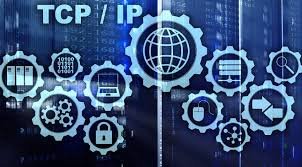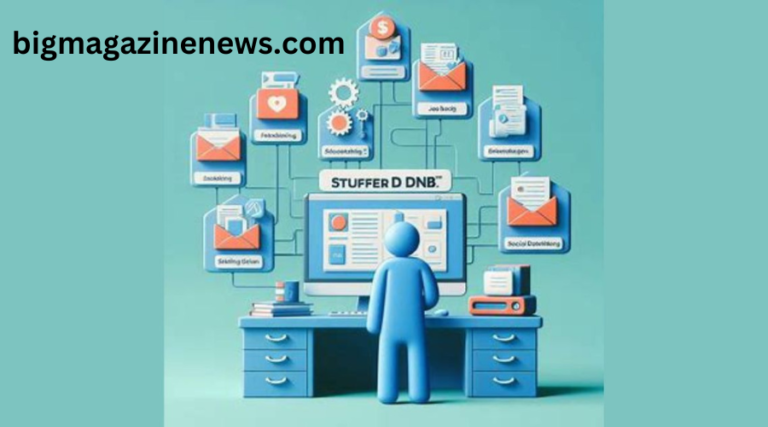192.168.28.57:5421 : A Complete Guide
Introduction
In today’s digital age, IP addresses are the backbone of our online interactions, acting as unique identifiers that enable devices to communicate over networks. One such IP address, “192.168.28.57:5421,” may seem like a random string of numbers to many, but it holds significant importance, particularly in local network settings. Understanding what this IP address represents, how it functions, and its potential applications can be incredibly valuable, whether you’re a tech enthusiast, a network administrator, or someone simply curious about the inner workings of the internet.
This blog aims to demystify “192.168.28.57:5421,” breaking down its components, exploring its common uses, and offering insights into why it might matter to you. By the end of this article, you’ll have a comprehensive understanding of this IP address and how it fits into the broader context of network management and online connectivity.
What is “192.168.28.57:5421”?
At first glance, “192.168.28.57:5421” may appear to be just another IP address, but there’s more to it than meets the eye. Let’s break it down:
- 192.168.28.57: This is the IP address, a numerical label assigned to each device connected to a network that uses the Internet Protocol for communication. The “192.168” portion indicates that this IP address belongs to a private network, which means it is commonly used within local networks like home or office settings, rather than on the broader internet.
- :5421: This is the port number, which specifies a particular process or service running on the device with the IP address “192.168.28.57.” Port numbers range from 0 to 65535, and “5421” is one of these, often assigned to a specific application or service to facilitate data exchange.
Together, “192.168.28.57:5421” refers to a specific device on a private network, running a particular service that can be accessed via port 5421. Understanding this concept is essential for anyone involved in network management or troubleshooting, as it allows for precise identification and access to resources within a network.
The Role of Private IP Addresses Like “192.168.28.57”

Private IP addresses, such as “192.168.28.57,” are crucial for managing local networks. Unlike public IP addresses, which are used for identifying devices on the global internet, private IP addresses are reserved for use within specific local networks. This means that multiple devices in different local networks can have the same private IP address without causing conflicts because they are isolated from each other.
In most cases, private IP addresses are assigned automatically by a router or DHCP server within a network. The “192.168” range is particularly common in home and small business networks, providing a simple and efficient way to organize and manage connected devices. For example, your smartphone, laptop, and smart TV may all have IP addresses starting with “192.168,” making it easy for your router to route traffic to the correct device.
The addition of a port number, as seen in “192.168.28.57:5421,” allows for even greater specificity. It ensures that data meant for a particular service or application on a device is directed to the right place, preventing confusion and ensuring smooth network operations.
Common Uses of “192.168.28.57:5421”
Understanding how and where “192.168.28.57:5421” might be used can provide valuable insights into its practical applications. Here are some common scenarios:
1. Remote Access to Network Services
If you have a server or a device running a specific service (such as a web server, file server, or database) within your local network, you can use “192.168.28.57:5421” to access it remotely. This setup is particularly useful for network administrators who need to manage and monitor services from different locations within the same network.
2. Home Automation Systems
In modern smart homes, devices like cameras, thermostats, and home entertainment systems are often connected to a local network. Using an IP address and port number like “192.168.28.57:5421” allows users to control these devices remotely, ensuring a seamless and integrated smart home experience.
3. Network Troubleshooting
For network engineers and IT professionals, “192.168.28.57:5421” can be a valuable tool in troubleshooting connectivity issues. By pinpointing the specific device and service associated with this address, they can quickly identify and resolve problems, minimizing downtime and ensuring optimal network performance.
Configuring and Managing “192.168.28.57:5421”
Setting up and managing an IP address like “192.168.28.57:5421” involves several key steps. Whether you’re doing this for a home network or a business environment, these best practices can help ensure smooth operation:
1. Assigning the IP Address
In most cases, IP addresses like “192.168.28.57” are automatically assigned by your router’s DHCP server. However, for critical devices or services, you may want to assign a static IP address to ensure it remains constant. This can be done through your router’s management interface, where you can manually input the desired IP address and associate it with a specific device.
2. Setting Up Port Forwarding
To allow external access to the service running on “192.168.28.57:5421,” you’ll need to configure port forwarding on your router. This process involves directing incoming traffic on port 5421 to the specific device with the IP address “192.168.28.57.” This is particularly useful for hosting services like a web server or game server that need to be accessible from outside your local network.
3. Securing the Connection
Security is paramount when dealing with IP addresses and port numbers. To protect the service running on “192.168.28.57:5421,” ensure that your network is secured with a strong password, and consider implementing additional security measures such as a firewall, VPN, or encryption. This will help prevent unauthorized access and safeguard your network.
Troubleshooting Issues with “192.168.28.57:5421”

Even with careful configuration, issues can arise when using “192.168.28.57:5421.” Common problems include connectivity issues, incorrect port forwarding, or conflicts with other devices on the network. Here are some troubleshooting tips:
1. Checking Connectivity
If you’re unable to access the service at “192.168.28.57:5421,” start by checking the device’s connectivity to the network. Ensure that it is powered on and connected properly, either via Wi-Fi or Ethernet.
2. Verifying Port Forwarding Settings
Incorrect port forwarding settings can prevent access to the service. Double-check your router’s configuration to ensure that traffic on port 5421 is correctly forwarded to “192.168.28.57.”
3. Identifying IP Address Conflicts
If multiple devices on your network have the same IP address, it can cause conflicts and connectivity issues. Use your router’s management interface to check the list of connected devices and ensure that “192.168.28.57” is unique.
The Future of “192.168.28.57:5421” and IP Address Management
As networks continue to evolve, the importance of IP address management will only grow. Technologies like IPv6 are gradually being adopted to address the limitations of IPv4, but private IP addresses like “192.168.28.57” will remain a crucial part of network management for the foreseeable future. Understanding how to effectively use and manage these addresses, along with associated port numbers like “5421,” will be an essential skill for IT professionals and tech-savvy individuals alike.
Conclusion
“192.168.28.57:5421” may seem like just a string of numbers, but it represents a key component of modern networking. From managing local networks to ensuring secure and efficient access to services, this IP address plays a vital role in the digital landscape. By understanding what “192.168.28.57:5421” is, how it works, and how to troubleshoot common issues, you can unlock the full potential of your network and ensure smooth, reliable connectivity.
Whether you’re a network administrator, a tech enthusiast, or simply curious about the world of IP addresses, this guide provides a comprehensive overview of “192.168.28.57:5421.” By following the best practices and tips outlined here, you’ll be well-equipped to navigate the complexities of network management and make the most of your digital environment.
As we move forward in an increasingly connected world, the importance of IP addresses like “192.168.28.57:5421” will only continue to grow. Embrace the knowledge you’ve gained, and apply it to your own network to ensure a secure, efficient, and seamless online experience.






